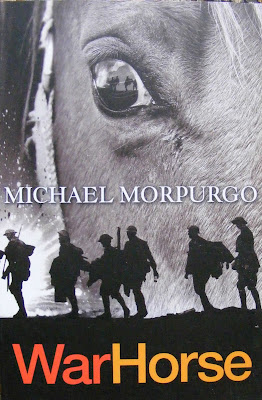Hazel M Peel (H M Peel) was a child during World War II, a time when getting access to horses was difficult if you came from a poor family. She would do Saturday jobs until she had enough money for a riding lesson, and then cycle across London for what she described as stables that were "very grotty, but there was nowhere else to go because it was wartime and horses and riding were very much at the bottom of the queue. Getting food for our bellies came first."
 |
| Harrap, first edition, 1959, illus Joan Kiddell-Monroe |
Hazel went on to work with horses as a teenager, starting when she was 15 at a livery stables in Grimsby. Food was still rationed, and the digs where she lived provided so little food she was reduced to eating the horse's food. She eventually decided she'd had enough of working long hours for very little money, and went back to London. From there, when she was 21 she applied to go to Australia as part of their two year scheme. She and her husband, whom she met on a cruise down the Suez, worked their way round Australia for three years, doing any job they could.
 |
| Armada, 1973 |
Out of that experience came three of Hazel's books: all involve horses which are wild in some way. Her first book,
Fury,Son of the Wilds, published in 1959, is about a horse born in the outback, from a brumby stallion, out of a Thoroughbred mare. This horse was captured and went to work on an Australian outback station. Fury proves well worth the effort: his Thoroughbred blood means he's very fast, and after a fire devastates the station, Fury saves his owner's fortunes by winning the Melbourne Cup.
Whether a Thoroughbred cross would have been allowed to enter the Melbourne Cup I do not know - but it makes a very good story.
 |
| Giete, 2011 |
Fury was first published by Harrap in 1959, illustrated by Joan Kiddell-Monroe. Armada picked up two of Hazel's titles (the other was Jago) in the 1970s, and issued them in paperback. After that, the books became extraordinarily difficult to find. Hazel republished both Fury and Jago herself in 2011.
~ 0 ~
For pictures of all Hazel M Peel's books, including the super-rare ones, and an interview with her, see
my website.




Comments
Quite a few non thoroughbreds have won the Grand National, the most recent being Neptune Collonges. Sprinter Sacre is also a non thoroughbred, both he & Neptune Collognes are Selle Francois.
Fiona - thanks. I hadn't actually cottoned on tot the fact that Neptune Collonges was Selle Francais. I have learned something. You are a fount of information!
Chris, yes, wouldn't it be a good read? I'm not sure what she's writing now. For a long while she's done historicals, but a bio would be fascinating.